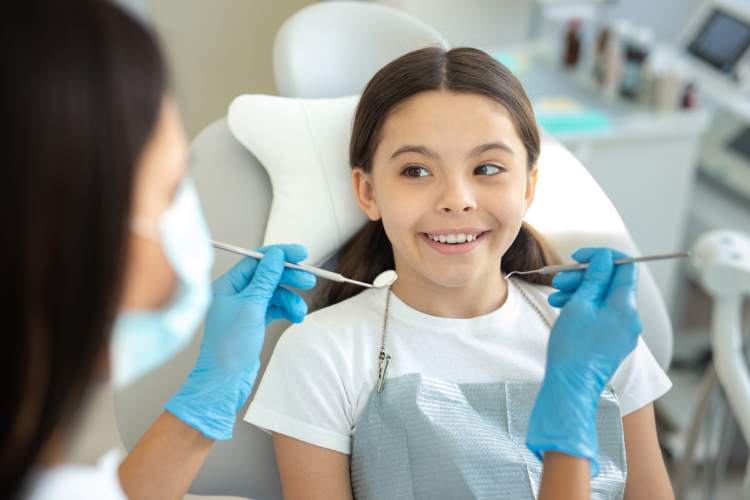As a parent, you want to give your child every opportunity for a healthy, confident smile. But how do you know when it’s time to schedule that first visit to the orthodontist? Is it too early? Should you wait until all their permanent teeth come in?
At Providence Orthodontics, we’re here to answer one of the most common questions we hear from parents: “How soon should my child see an orthodontist?” The short answer? By age seven.
Let’s talk about why that’s the magic number—and what early evaluations can mean for your child’s smile.
The American Association of Orthodontists Recommends Age Seven
According to the American Association of Orthodontists (AAO), children should have their first orthodontic checkup no later than age seven. At this stage, most kids have a mix of baby teeth and permanent teeth, which gives orthodontists a clear picture of how their smile is developing.
Even if your child’s teeth look straight, there may be underlying issues that only an orthodontic specialist can detect.
Why Age Seven?
Here’s what we can evaluate at this age:
- Jaw growth and development
- Crowding or spacing issues
- Crossbites, underbites, or overbites
- Impacted or missing teeth
- Harmful oral habits (like thumb sucking)
- Premature or late loss of baby teeth
By identifying these concerns early, we can monitor your child’s development and begin treatment at the optimal time—if it’s needed at all.
Early Evaluation Doesn’t Always Mean Early Treatment
One of the biggest misconceptions about seeing an orthodontist early is that it means braces right away. That’s not usually the case.
At Providence Orthodontics, most of our younger patients don’t need treatment right away. Instead, we often recommend growth monitoring, where we keep a close eye on your child’s development through complimentary check-up visits every 6–12 months.
This allows us to catch potential issues before they become more complex and ensures we begin treatment only when it’s truly necessary.
When Early Treatment Is Recommended
In some cases, Phase One treatment (also known as interceptive treatment) may be beneficial. This typically begins between ages seven to ten and is used to:
- Create room for incoming permanent teeth
- Correct jaw alignment and bite issues early
- Prevent the need for more invasive treatment later on
- Reduce the risk of trauma to protruding front teeth
We use gentle, effective techniques such as expanders, limited braces, or Invisalign First to guide jaw growth and prevent long-term complications.
Signs Your Child Might Need an Early Orthodontic Evaluation
Even before age seven, you may notice signs that something’s off with your child’s bite or smile. Common red flags include:
- Difficulty chewing or biting
- Mouth breathing
- Early or late loss of baby teeth
- Crowded, misplaced, or blocked-out teeth
- Speech difficulties
- Thumb or finger sucking past age five
- Clicking or shifting of the jaw when opening or closing
If you notice any of these signs, it’s a good idea to schedule an orthodontic evaluation sooner rather than later.
Why Families in Providence Trust Us
At Providence Orthodontics, we make orthodontic care a fun, relaxed, and positive experience for kids—and stress-free for parents. Whether your child is ready for treatment or just needs to be monitored, you can count on:
- Expert care from a compassionate team
- Personalized treatment based on your child’s needs
- Clear communication and honest recommendations
- Free consultations and growth monitoring visits
- A welcoming, family-friendly environment in Providence
It’s never too early to start your child on the path to a healthy smile. If your child is around age seven—or if you’ve noticed signs that something may be off—let’s talk.



